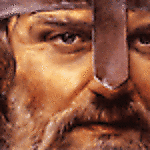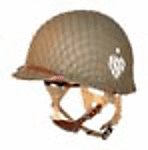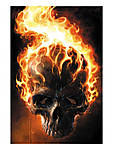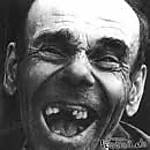JAGDPANTHER PAINTING STEP-BY-STEP as requested, here is my attempt at a SBS of the Jagdpanther painting. many of the steps are a "first time" for me as i was trying new techniques and materials to learn how they work and what effects i could produce with them. so saying that, please feel free to comment and/or question anything as i hope that this can be a mutual learning process. i will add paint codes and details where possible.
Note: all text captions are for the photo shown above the words. okay, time to "hunt & peck" the keyboard my friends...

Step 1: Primer (Tamiya Fine Primer Grey Spray Can) was applied to help review build issues before all out painting. left overnight to dry.

Step 2: base colour airbrushed overall (Vallejo 872 Chocolat Brown & V861 Black mixed 70/30). i will just refer to Vallejo colours with a "V" from now on.

Step 3: airbrushed Dunkelgelb tan camo only where needed. i used to spray the whole tank tan but to keep the base dark brown for the next 2 camo colours i stayed in the areas that were going to be Dunkelgelb. lots of discussion over this colour on many forums, i used V914 Green Ochre as it was a good start for what i wanted to do later.

Step 4: airbrushed Olivgrun green camo (V890 Reflective Green) only where needed.

Step 5: airbrushed Rotbraun brown camo (V872 Chocolat Brown) where needed. overlapped the previous two camo colours to "trap" the pattern with the darkest colour.
Step 5-1/2: i gave the top surfaces and the upper sides a light "dusting" of diluted V976 Buff to tone down the camo and blend it a bit better. the above pic shows both the brown camo and the buff overspray done.

Step 6: base colours added by brush to the details such as tools, hatches and accessories. let this dry for a few days and then sprayed the model with Future undiluted through my airbrush. best to keep this as light coats as the Future can dry with drip marks.

Step 7: decals applied and left to dry overnight then sprayed Dullcote Matte Lacquer Varnish from spray can.

Step 8: added washes made from oil paints, one is Raw Umber/Burnt Sienna/Black and the second is Raw Umber/Black. applied it by round brush and the used clean flat brush to blend the oil wash. i find applying oil washes on a matte varnish the best for me to control how it behaves on the surface.

Step 9: added dots of artist oil paints (Titanium White, Yellow Orche, Burnt Sienna) on the camo is random patterns with round brush. this is a new technique and, boy, did this show potential.

Step 10: oil dots are blended (more blending was later done as some areas looked odd) and rain streaks where added with the same technique but tiny dots of Titanium White only.

Step 11: added wash to the tools, etc... and added some more white dots in oil paint for the rainstreaks. also added a bit more dark wash here and there to get some of the details to pop.

Step 12: added black oil paint to the front and back of the Jagd to create "wet spots" in a splatter pattern. also weathered the tools and gear a bit more with oil paints. did a bit of drybrushing on some of the raised edges and details with Vallejo acrylics by mixing white into the camo colours used.

Step 13: tried my hand at doing the undercarriage with Mig pigments for the first time. applied 70% Isopropyl Alcohol first with a round brush and then took the pigments with a clean dry brush and held the brush over the area and tapped it so the pigments sprinkled onto the model. used Mig Light European Earth P415, Dry Mud P232, Russian Earth P034 and Concrete P026. to try something different, i applied a Raw Umber oil wash in the upper undercarriage to simulate wet areas. never heard it people tried this before but it kind of worked.

Step 14: chipping was done with a 0/3 brush using Raw Umber and Buff. i did all the chips and scratches in Buff first then added Raw Umber to some, putting the dark colour always above or to the same side of the Buff to simulate a single light source. this was my first time adding hightlights to chips and it made a big difference. i was wiping away at "dust" that was actually painted chips for hours after this as it was pretty convincing in person.
also added rust steaks to the chipping here and there with Burnt Sienna oil paint.

Step 15: airbrushed Tamiya NATO Brown to the tracks.

Step 16: added oil washes to the tracks.

Step 17: drybrushed acrylic black to the raised areas of the tracks then rubbed a 6B pencil onto the raised treads to get graphite on.

Step 18: applied Mig pigments that matched the diorama over the tracks. since the Jagd has rubber rimmed road wheels, i added a drybrush of Tamiya NATO Black on the insides where the wheels would have rubbed. after this pic was taken i rubbed the tracks with a clean stiff flat brush to blend the pigments better and reapplied graphite randomly to the tread cleats again to make them stand out.

Step 19: i assembled the wheels and tracks before applying the rest of the pigments to the tank to avoid extra handling of the model. here is the bulk of the pigments added. also splattered MIG Dry Mud wet (mixed with Isopropyl Alcohol again) on some of the lower areas by dipping a stiff flat brush and the flicking the bristles with my fingers while holding the brush close the model.

Step 20: final pigments added and blended. i tried two ways for this, one way i applied the pigments wet on a tiny brush that has stubbly bristles due to age and then rubbed that with a clean dry brush after it dried, and second way i placed large dots of alcohol on the area and then dabbed dry pigments into the area with a small brush.
this is how i painted the Jagdpanther. learned some more on how to use oil paints and powdered pigments. getting to understand some new techniques as well. i'm no expert though, just a guy who's trying his best at painting each model a bit better than the last. hope this helps and perhaps opens a discussion as to how you approach model painting so that i can learn from your techniques.
cheers, mh.






































































